The Monuments and war Cemetery of Longpré-les-Corps-Saints
On a visit with the Eastry Twinning Association to Longpré on Armistice Day 2007, I had for the first time noticed the dedication on one of the memorials in the village. We firstly visited the WW1 Commonwealth cemetery just outside the village, and then returning to the centre we placed wreaths on what I understood to be the WW1 monument for the French dead, and after a short procession around the village we placed a 2nd wreath on a monument which I assumed to be in memory of those killed in the WW2. However, it was on this monument that I noticed the dedication "5 et 6 Juin 1940" which started my interest, it was not a date which meant anything to me. I did a little research and found out it was in fact the beginning of the German attack on the Somme during which 90% of Longpré was destroyed including the spire of the church.
Here is a brief overview of the monuments and cemetery in Longpré.
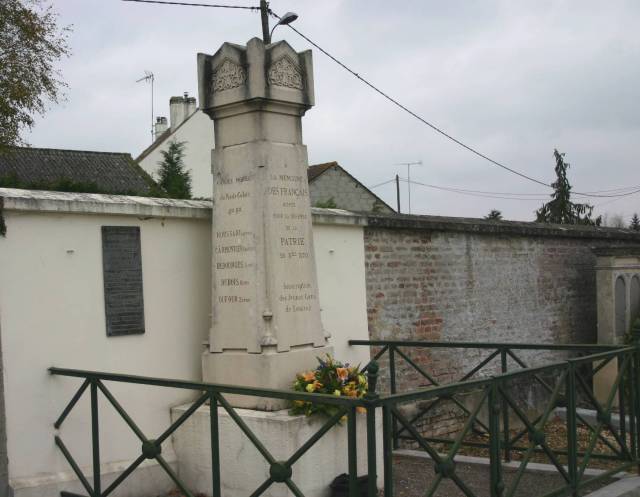
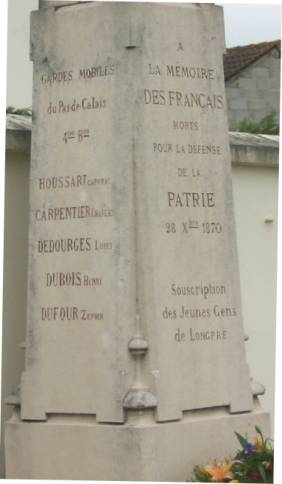
On December 28th 1870, the Prussians invested [attacked?] the locality, 8 people were killed (combatants or civilians), 15 wounded and 60 prisoners on the French side were taken in the old cemetery where resistance was concentrated.
The inscription [translation by Google] on the monuments reads:-
Inscriptions on the front face: With the memory of the French died for the defence of the fatherland, 28 Xbre 1870, subscription of the young people of Longpré. On the left face: Mobile guards of Pas-de-Calais,4e Bon , Houssart Corporal, Carpentier Charles, Dedouiges Louis, Dubois Henry, Dufour Zéphir. On the right face: Mobilized National guards of North, Delval Baptist, Stake, Saintolie'.
"It's therefore not about local people killed in combat."
Built in 1921 and standing at the northeast corner of the church, the monument
is framed right and left by a mortar. The front is decorated by the life-sized
statue of a moustached soldier, holding his rifle by the barrel, the
rifle-butt placed on the ground between his feet.
Before 1921 there had been a memorial in Longpré, which gave rise every year to
a patriotic event, however, to honour the heroes of the Great War the City
Council decided in 1920 on the expansion and beautification of the monument.
Arthur Saint-Germain a local entrepreneur undertook the task to repair and move
the monument, adding the Gallic cockerel on the top and marble plaques engraved
with a list of the names of the 42 dead, killed in the War of 1914-1918.
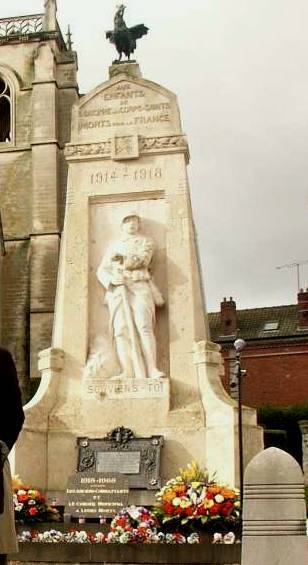


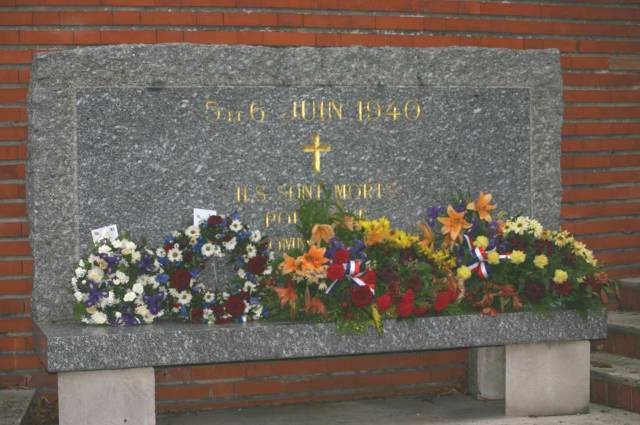
The German attack on the line of the Somme began on June 5th. The French used the period of the Dunkirk battle to make some defensive preparations but not enough to compensate for the strength of the German forces. The French were now organized as Army Groups 3 and 4. Army Group 3 were deployed to hold the Somme near the coast and Army Group 4 the line of the Aisne. The German attack is code named Operation Rot. Their tank forces, now organized in two Panzer Groups and one Panzer Corps, are given the leading role. The heaviest fighting at first is in the area between Amiens and the sea where Hoth's Panzer Corps was heading the drive. The French line along the Somme between Amiens and the coast was broken by the attacks of 15th Panzer Corps after a vigorous struggle. Rommel's 7th Panzer Division makes the largest gains.
The events of May 28 to June 6, 1940 had been tragic (90% of the village of Longpré was destroyed), a heavy toll for the battle of France was paid here, and the valiant fighters of the 1st company of the 1st Battalion, 53rd RICMS [regiment d'infanterie coloniale mixte Sénégalais] who defended the village in the face the panzers of General Rommel during his breakthrough on 5 and 6 June 1940 are remembered as follows:
Epitaph of Remembrance
5th and 6th June 1940
†
They died so that men love.
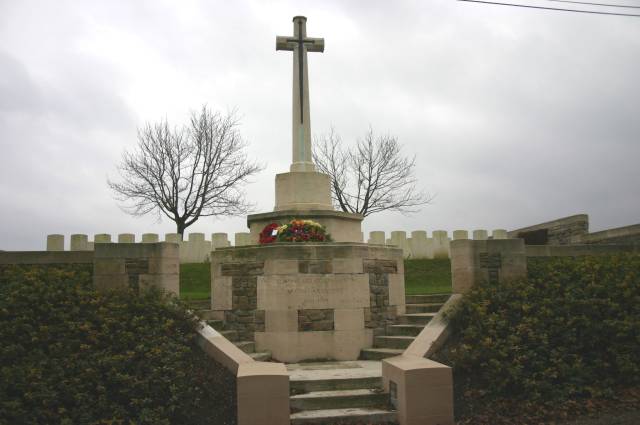

There are 58 British graves and 20 Australian in this cemetery - plus one French war grave (Jean PONS died 16.04.18).
In April 1918, at the turning-point of the German offensive towards Amiens, the 12th and 55th Casualty Clearing Stations came to Longpré and opened a cemetery close to the station, afterwards known as Longpré British Cemetery No 1. When it was closed before the end of the month, it contained 35 graves
The current cemetery was opened in April 1918 after the closure of Longpré British Cemetery No.1 but was closed itself the following month. It was opened again in 1919 to take the graves from the No.1 cemetery which was being cleared. At that point it contained 76 Commonwealth graves and the one French. Dewar and Boswell were added later as shown by their grave numbers and were either battlefield clearances or removals from nearby communal cemeteries or churchyards. They are not listed in the CWGC register published in 1922.
For a list of names please see the website http://1914-1918.invisionzone.com/forums/lofiversion/index.php/t16146.html